Many apologies but Jim is late posting today......

Anne McHale
In the meantine the result of the 2010 Young Wine Writer of the Year Award here.
David Cobbold (Eccevino) est le plus français des journalistes anglais du vin, ou vice versa. Il a reçu en 2011 le Wine Blog Trophy pour son blog, More than Just Wine.
Jim Budd, sujet de sa Gracieuse Majesté, est journaliste pour diverses revues britanniques. Amoureux des vins de Loire, il leur consacre un blog, Jim's Loire, primé en 2009 du Wine Blog Trophy.
Hervé Lalau est un journaliste français écrivant pour diverses revues et sites français, belges, suisses et canadiens. Son blog "Chroniques Vineuses" lui a valu le Wine Blog Trophy en 2010.
Michel Smith, PourLeVin, est un journaliste français établi en Roussillon, travaillant pour diverses revues et guides en France. Il s'intitule
lui-même "Journaliste en Vins et autres Plats de Résistance".
Marc Vanhellemont est un journaliste belge travaillant pour divers magazines en Belgique et en France. Incontournable, sauf par la face nord.
Retrouvez vos chroniqueurs préférés grâce à notre fameux Calendrier
Lundi: Cobboldday
Mardi: Buddday
Mercredi: Lalauday
Jeudi: Smithday
Vendredi: Vanhellemontday
Many apologies but Jim is late posting today......

Anne McHale
In the meantine the result of the 2010 Young Wine Writer of the Year Award here.

Interesting to see how changes in communications can alter one’s habits. I have lived in London for much of my life and in Forest Hill in leafy South London since 1974. During all of that time I have spent little time in East London. Certainly over the last 30 years my visits there have been pretty rare.
Like many areas of London Forest Hill is multi-cultural with people from different origins and races. However, unlike the East End, it was never a part of London where people settled when they first arrived in the UK. In contrast the East End has been the part of London that throughout history that has accommodated successive waves of new settlers, who in time gradually fan out across London and the UK making way for the next arrivals.

Taking the East London Line to Shadwell transports you into an area where the dominant culture is from the Indian sub-continent. It also takes you to the very popular Lahore Kebab House (http://www.lahore-kebabhouse.com/). Apart from serving very good food for a very reasonable price, you can make your own drink so we took along a bottle of 2009 Anjou from Jacques Beaujeau’s Château la Varière. I’m pleased to report that this softly and richly fruited Anjou stood up well to our selection of strongly spiced dishes.

Photo by Ian Kerridge
It was on the way to Shadwell that we read about the new Facebook group called Subversively move Tony Blair's memoirs to the crime section in book shops (http://www.facebook.com/group.php?gid=150746811621277&ref=mf). Worth joining – it was set up at the end of last week and now has over 6500 members and growing fairly rapidly.
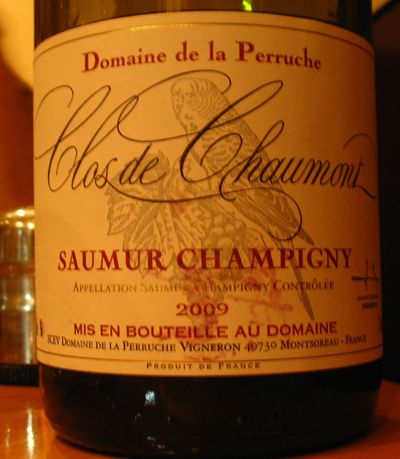
Go further up the line and you come to Dalston Junction, where there is a strong Turkish community. Here we have enjoyed a couple of meals over the past few days. Last Thursday we went to the Mangal Ocakbasi (www.mangal1.com) restaurant, which is very popular and buzzy. You can also bring your own wine, so we took the 2009 Clos de Chaumont, Saumur-Champigny, Domaine de la Perruche, which is also owned by Jacques Beaujeau. I have to say that this was a disappointment with thin fruit and rasping acidity. Possibly the bottle wasn’t good, although it wasn’t corked but on Sunday night we tried the straight 2009 Saumur-Champigny from Perruche and this was very much better, although not as good as the 2009 Anjou from Varière.
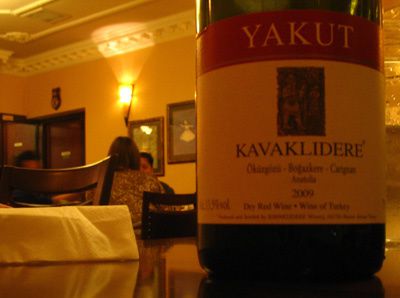
Saturday night we were back in Dalston Junction. This time we tried Istanbul Iskembecisi (www.istanbuliskembecisi.com/). This was quite quiet in contrast to Mangal Ocakbasi but we probably had a better meal here. The Albanian liver that we had as one of our meze was particularly good and my shish kebab tender and flavoursome. There is a licence here so we chose a bottle of 2009 Yahut from Kavaklidere (http://www.kavaklidere.com/products.aspx) made from a blend of Öküzgözü, Boğazkere and Carignan, which was attractively soft and easy drinking and matched our food well.
We half expected to see Michel there, continuing his exploration of Carignan but he has either already visited or will doubtless be on his way sometime in the future.
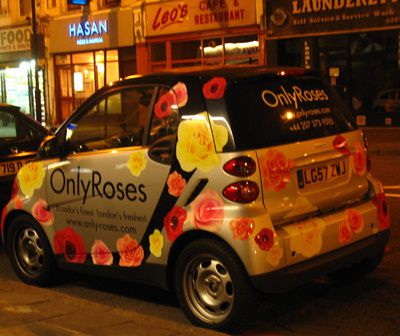
Outside the restaurant in Dalston – fresh roses from Ecuador!
Jim
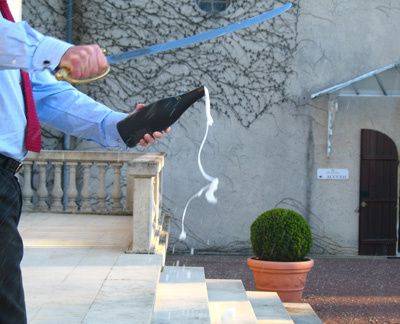
A traditional way of opening sparkling wine – just as Cav puts the others to the sword!
Yet another stunning victory for Mark Cavendish on the final stage of the 2010 Tour de France as he roared up the Champs de l’Elysée leaving the opposition behind for dust. Cavendish – often known as the Manx Missile as he comes from the Isle of Man – added another five stage victories this year taking his overall tally to 15. Cavendish’s emphatic victories in Bordeaux and Paris were achieved without his customary lead-out man, Mark Renshaw, who was thrown out of the Tour for head-butting another rider while travelling at around 60 km/h heading for the line, so helping Mark to win No. 3.
This brings him level with the great Belgian sprinter, Freddy Maertens, who incidentally was and presumably still is a considerable amateur of the wines of Bordeaux. Maertens and Cavendish now tie for 12th place in the list of all time stage winners. Eddy Merckx heads this list with 34 victories. Like Cavendish, Maertens achieved his 15 victories in just three editions of the Tour winning a remarkable eight stages in 1976. As Cavendish is just 25 and on current form, assuming that he doesn’t get seriously injured – always an occupational hazard for a sprint cyclist – then it may not be too far fetched to imagine Cavendish doubling his tally to 30 or more in the seasons to come. After all Petacchi, the veteran Italian sprinter who won the Green Jersey this year, is 36 years old.
In a couple of earlier posts during this year’s Tour I rather dodged the issue of matching Mark Cavendish with a suitable wine. Yesterday’s explosive surge up the Champs de l’Elysée has brought clarity. It has to be Cuvée Merret-Bloomsbury from Ridgeview, a leading producer of English sparkling wine. This cuvée is named after Christopher Merret, who may well have been the true inventor of sparkling wine back in the mid-1700s. I’m aware that the méthode ancestrale existed before this time but this is a little different to a wine that has undergone a secondary fermentation in bottle. Also the pressure is higher.
Merret presented a paper in 1662 to The Royal Society about adding sugar and molasses to wines of all sorts to make them sparkling. This is some 30 years before Dom Pérignon was doing his level best to keep the wines of Champagne still rather than sparkling.
So it would appear that the secret of making sparkling wine, which has over the centuries enriched the economy of the Champagne region, actually was a gift from north of La Manche! Admittedly some of the still wines Merret used to transform into sparkling were imported from Champagne. At that time France apparently did not have the technology to produce bottles that were sufficiently strong to withstand the pressure produced by a secondary fermentation in bottle.
After a decidedly flat start to this year's Tour, Mark Cavendish found some sparkling form. He is just one more stage win behind equalling the legendary five times Tour winner, Jacques Anquetil's 16 stage wins.
Cheers Mark – bien Merreté!
Jim

Pour nos amis non anglophones, voici le texte de Jim dans la langue de Molière, ou plutôt, de Messier...
C’est le moment de faire le point. Des caisses de Lafite s’échangent aux alentours de 15.700 euros et celles de Latour pour 13.000. Petrus, Le Pin et Ausone iront certainement beaucoup plus haut. Pensez à un prix et multipliez le par deux, c’est le principe.
Si l’on excepte les bouteilles bues par les millionnaires chinois et autres vedettes du football en mal de sensations après avoir été éjectées du Mondial, les grands Bordeaux rouges sont aujourd’hui surtout achetés au titre d'investissement.
J’ai le plaisir de vous annoncer que pour mieux refléter cette nouvelle réalité, deux vénérables institutions bordelaises, le CIVB (Conseil Interprofessionnel du Vin de Bordeaux) et l’UGC (Union des Grands Crus) vont très bientôt changer de nom. Le premier juillet, ils deviendront respectivement le Crédit d’Investissement en Vins de Bordeaux et l’United Group Capital.
Actuellement, ces deux organismes planchent conjointement sur un lexique des investissements vineux. Les 5 du Vin ont pu se procurer un avant-projet de ce travail.
Les vignerons y sont à présent qualifiés de créateurs d’actifs (asset creators). Les égrappoirs deviennent des effeuilleurs d’actifs («asset strippers»), en référence aux effeuilleuses de cabaret. A partir de 2011, les dégustations en primeur deviennent la Wine Asset Class Convention, et les critiques vineux sont rebaptisés «analystes d’actifs». Dorénavant, les Second Vins s’appelleront «Dérivés», les Troisièmes et Quatrièmes Vins, «Obligations pourries» (junk bonds).
D’ici à la fin de la décennie, la plupart des 61 Grands Crus Classés seront probablement produits aux fins d’investissement; c’est pourquoi des cours de finance vont être proposés aux vignerons – pardon, créateurs de valeur – qui souhaitent se positionner sur ce marché.
Même si, comme les sardines de la fameuse histoire de Simon Loftus (Anatomy of the Wine Trade: Abe's Sardines and Other Stories), les vins seront rarement consommés, il est crucial qu’ils se montrent à leur avantage lors de la Wine Asset Class Convention, puisque c’est là que les notes des analystes fixeront les prix du marché.
Les actifs présentés en primeur devront avoir une robe profonde, des arômes de moka et de noix de coco, une bonne dose de fruits noirs et de goudron, une structure veloutée et entre 13° et 13,5° d’alcool. On veillera à ne pas dépasser les 14°, car ceci n’est pas du goût de tous les analystes, ce qui peut faire baisser la cotation.
Les créateurs d’actifs veilleront également à ce que leurs actifs aient une durée de vie de 49 ans. Idéalement, ils devraient être parfaits pendant les 49 premières années, puis complètement passés à la fin de l’année suivante – en effet, les actifs ayant une durée de vie inférieure à 49 ans sont classés comme actifs défectibles («wasting assets»), et les gains éventuels à la revente ne sont pas imposables.
 Nouveau Premier Grand Cru Classé 'asset generator' en construction
Nouveau Premier Grand Cru Classé 'asset generator' en construction
Jim Budd

It is time to take stock!
Cases of 2009 Lafite are now changing hands for upwards of £13,000 and Latour for £11,000 and doubtless Pétrus. Le Pin and Ausone will be multiples of this. Think of a figure and double it!
With the exception of those bottles drunk by Chinese millionaires and assorted football stars who suddenly find themselves at a loose end after being ejected prematurely from the World Cup, top red Bordeaux is now largely bought as an investment.
I’m delighted to see that two venerable Bordeaux institutions – CIVB (Le Conseil Interprofessionnel du Vin de Bordeaux) and the UGC (Union des Grands Crus will be changing their names form 1st July to Consolidated Investissements des Vins Banque and United Group Capital to reflect the new realities.
The two organisations are currently working together to produce a lexicon of wine investment terms. Les 5 du Vin has been privileged to see an early draft of their work. Winemakers become asset creators, wineries replaced by asset generators and egrappoirs – asset strippers. From 2011 the annual en primeur tasting will be the Wine Asset Class Convention with wine critics renamed asset analysts. Second wines become derivatives, while third and fourth wines – junk bonds.
In the expectation that most of the 61 Grand Cru Classées will be primarily made for investment purposes by the end of this decade, courses will be offered to asset creators wishing to make investment grade wine. Although like the sardines in the book of short stories by Simon Loftus ‘Anatomy of the Wine Trade: Abe's Sardines and Other Stories (published in 1987)* the wines will rarely be drunk, it is crucial that they show well during the annual wine asset class convention as the analysts' scores will set the market price.
En primeur assets need to have deep colour, mocha and coconut aromas, thick gobbets of black fruit and tar, velvetine texture and around 13-13.5% of alcohol. It is important that alcohol levels do not exceed 14% as this often divides the analysts and may lower the asset’s price.
The asset creator will also want to ensure that the assets should have a life expectancy of 49 years. Ideally they should be fine for 49 years and then completely over the hill half a year later. Assets that have a life expectancy of less than 50 years are classified as ‘wasting assets’ and any capital gain is not subject to tax.
* Jancis Robinson MW (editor of this series of wine books) explains the unusual subtitle of this book in an essay on which wines make the best investments:
"It is as well to keep in mind an anecdote from Simon Loftus ... which he attributes to the late Peter Sichel: `Abe bought a shipment of sardines that had already been traded many times and each time profitably. Unlike previous buyers, Abe decided to try a can of his purchase. The sardines were terrible. He telephoned Joe from whom he'd bought them only to be told 'But Abe, those sardines are for trading, not eating!'"

A new First Growth 'asset generator' under construction
Jim Budd
Sad news this week to learn that Colin Parnell, the founding publisher of Decanter magazine has died. Colin had long since ceased had any involvement in magazine which is now owned by IPC and housed along with many other titles in a glass and steel office near to London’s Tate Modern.
All a far cry from Decanter’s original offices in Clapham Junction* I believe. The magazine was set up in 1975 by Colin and a hard-drinking Australian called Tony Lord. Tony predeceased Colin by some eight years dying in Western Australia in March 2002 at the age of 56 having sold his share in the magazine at the same time of Colin. Tony moved back to Western Australia where he set up a vineyard.
Colin, in contrast, appeared to gradually move away from the world of wine allowing Patricia, his wife who is younger, to take centre stage with her PR work for a number of leading wine brands. Colin along with Tony, however, leave behind them a legacy of founding the only consumer wine magazine based in the UK that has survived long term, although quarterly The World of Wine Wine may well be now there for the long haul.
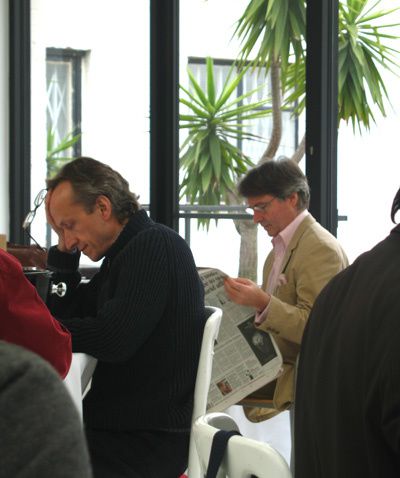
A climatic moment at ther Decanter World Wine Awards – Mister Cool (Steven Spurrier) reads a paper while Andrew Jefford agonises.
Indeed Decanter has prospered with a Chinese edition and is apparently sold in 96 countries around the world along with a substantial annual wine competition – the Decanter World Wine Awards. Founded in 2004 this now has in excess of 10,000 entries. The latest offshoot is Decanter Education, which was launched this May.
This is a very considerable achievement as there have been numerous food and wine magazines launched in the UK with considerable fanfare – Taste and A la Carte come to mind at the end of the 1980s – that are now just brief historical footnotes.
I think I started reading Decanter in the late 1970s or perhaps the early 1980s. Certainly I’m sure that I have a complete set from 1983 as I have long intended to have a look and see how the famous 1982 vintage was perceived then. I’m convinced that the idea that Robert Parker was the only critic who really got 1982 is a myth. This was the first Bordeaux vintage (and I have long since stopped) I bought en primeur. At the time I didn’t know Robert Parker from a packet of crisps, so it is clear that my perception that 1982 was a stellar vintage came from someone else.
I guess I now owe it to Colin to do that piece of research as he was still at the helm when I started to write for Decanter.
* No I was right about the railway but it was in an arch close to Waterloo not Clapham Junction.
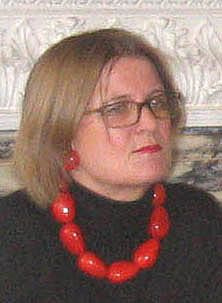 Jancis Robinson MW: a vice-president of the Circle
Jancis Robinson MW: a vice-president of the Circle
It is going to be a busy few days. Monday is the AGM and then the annual dinner of the Circle of Wine Writers. Then Tuesday it is the madness of the London International Wine Trade Fair, which is celebrating its 30th edition.
The Circle of Wine Writers was founded back in 1960 by Cyril Ray and it may be the longest, still active organisation of wine writers in the world. From a dozen or so initial UK based members the organisation has grown to around 275 members around the globe.
Articles would have been by hand or using a typewriter – either manual or electric. A couple of decades before rudimentary personal computers started to make an appearance and even longer before websites and blogs would see daylight.
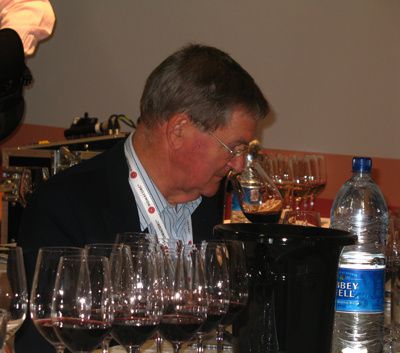 Hugh Johnson a former president of the Circle
Hugh Johnson a former president of the Circle
Not even the most far-sighted on the small group founders could have envisaged how far things would change over the next 50 years. Whatever the advantages of modern communications and having drinkable wine from all around the world, they would certainly have found the price of top Bordeaux more agreeable than it is now.
The Spring 1960 list from J.L.P. Lebèque shippers of French wine based at 9-10 Railway Approach, London Bridge, London offered a case (12 bottles) of the 1955 Château Margaux at 290/– (shillings) duty paid or £14.50 (17.05€) in today’s currency. Farr Vintners, now one of the UK’s leading fine wine brokers, has a case of 2005 Château Margaux – the equivalent vintage in time to the 1955 in 1960 – for £7500 in bond, so before excise duty and sales tax. By the time these are added on the price has hit £8836 for the case.
The price of one case of Château Margaux now would have bought you 609 cases of the 1955 in 1960!
If you felt like splashing out, then a case of 1955 Romanée Conti at 800/- (shillings) or £40 would have been good for high days and birthdays. Then why not add some white wine to drink with oysters and potted shrimps? A case of Muscadet from Ackerman-Laurance, bottled in Lebèques' cellars in London was 88/- or £4.40 – nine cases of Muscadet for a case of Romanée-Conti. The differential has widened a bit since then!
Hopefully the Circle of Wine Writers will still be going in another 50 years but in what form and how the message will be delivered I have no idea. Whatever happens I very much doubt if a case of Château Margaux will just £14.50 in 2060.
There is no doubt that the ‘social media’ – blogs, facebook, twitter YouTube etc. – has opened up a plethora of new ways of communicating about wine. When anyone with a wireless connection can join in, the days of the omniscient wine critic are now surely numbered if not already over.
Last September I was at The Boutique Wineries tasting in London. During the walk-round tasting there was a blogging broadcast of the Port harvest going on in the Douro that day. Very few of the tasters appeared to take much notice of the scenes on the screen showing workers picking grapes. Hardly surprising as the Douro harvest, fascinating though it might be, was not why people had come to the tasting. It had no relevance.
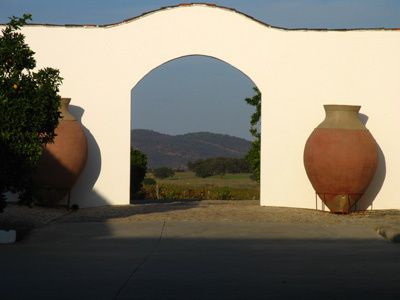 Fading light@Cortes de Cima
Fading light@Cortes de Cima
It was potentially a good idea to use a video but unfortunately no one had thought through how such a tasting would be meaningful. It had just been assumed that the medium without any tailored message would work by itself. Of course it didn’t as tasters hove in and out of view.
Whatever the medium there has to be a clear purpose, which is why I’m also somewhat skeptical about a new development at this year’s London International Wine Trade Fair – The Access Zone:
"The Access Zone" @ The 2010 London Wine Fair
At the London International Wine Fair 2010 Catavino will with the help of WineConversation.com, the EWBC, and Wineblogger.info bring you "The Access Zone" a place to meet up, and talk about wine online.
With 60+ meters to hang out at, there will be tastings, seminars, and plenty of interactive excitement for all of you to take part in. Free WIFI, powerpoints, and places to sit for all of you who want to blog, tweet, upload, or otherwise.

2009 Excel (exhibition centre) expands by 60%
I’m only at the fair for one day this year and I’ll try to drop by but I’m not convinced that people come to the fair to blog and tweet (or twat perhaps). Don’t they go to taste wine and meet people whether they are winemakers or importers etc.
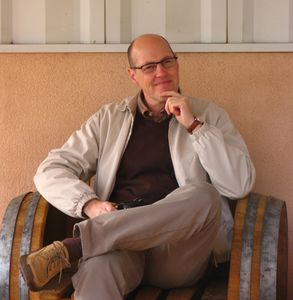 Tom Cannavan in Chile on his barrel throne ready to receive homage!
Tom Cannavan in Chile on his barrel throne ready to receive homage!
Time as the last showers of a typically wet English Bank Holiday clear away for a few reflections about wine bulletin boards
Let’s start with some thoughts from Jamie Goode (the wine anorak) following the news that the bulletin board on erobertparker.com will henceforth be open to subscribers only:
'The death of the wine bulletin board?
Just heard the news that the erobertparker.com wine forum is to go subscriber-only (see the announcement at http://dat.erobertparker.com/bboard/). While I can understand the reasons for this, I think it’s a mistake. The move to hide material behind paywalls limits the number of readers, viewers or listeners, and in any form of media, eyeballs (or ears for some?) are the currency. You really want as big an audience as possible. I’m not sure that erobertparker crew have ‘got’ web2.0 at all.
Times change. These days, online fora are being replaced by social networks – a sort of distributed model of communication, which is hard to control (so big media treat it with suspicion), but is actually more vibrant and compelling. Twitter, Facebook and Blogs are where it’s at if you want to connect with fellow wine nuts online.’
Jamie may be right, although I fancy he has rather overstated his case.
It is nothing new for a wine bulletin board to be open to paying subscribers only – as far as I know Jancis Robinson’s forum on her Purple Pages has always been subscriber only.
With one notable exception I’m not a great visitor of wine bulletin boards – I was a very occasional visitor to the erobert forum and equally occasionally I glance at the winelovers’ board. However, I’m a regular participant on Tom Cannvan’s civilised wine forum of www.wine-pages.com and I can’t see any signs of imminent mortality here – rather the reverse.
The wine-pages forum was founded in April 2004 with Tom Cannavan as the first member to register on 26th April. Member number 3538 signed up yesterday. Incidentally the latest member is from the USA, so perhaps someone who was formerly on the erobert board…
As of 17.36 on Monday 3rd May 2010, 21,967 threads and 363,533 posts had been made on the wine-forum, which has also spawned other fora, including beer, whisky and an off-line forum where members organise frequent themed wine meals. The leading poster is the remarkable Keith Prothero, who has clocked up 17,494 posts since he signed up on 29th April 2004. This means an average of eights posts a day and just under 3000 a year. His closest challenger, Alex Lake, is now on 12,084 and is the only other member of the wine-pages to have topped the 10,000 mark. There are 17 members with over 5000 posts to their ‘credit’, assuming this is a fitting description for such industry!
Debate on wine-pages is as I have already indicated civilised and members are welcoming to newcomers and happy to pass on tips and suggestions. Sadly wine-pages is male dominated but perhaps this is true of other wine bulletin boards or perhaps even bulletin boards as a whole. There are no regular female contributors to wine-pages. Also, although there are over 3500 members, only just over 300 have made more than 100 posts.
A number of regulars on wine-pages have their own blogs, are on Facebook and some may even – twatter – but none of these media, I suspect, offers quite the same sense of community as a good bulletin board.
The UK General Election is now entering its final stages. We have the last leaders televised debate to come this Thursday and then on Thursday 6th May we will cast our votes – or rather those of us that bother to do so. Actually the percentage of the population voting may well be higher than in recent elections due to the interest in the three leadership debates.
 Poster advertising the Leaders’ debate
Poster advertising the Leaders’ debate
For the first time ever, our leaders have agreed to a televised debate and to many people’s surprise the debates have proved to be compelling television.
But enough of the politics, this post is about selecting appropriate wines for the three major parties according to their colours red (Labour), yellow-gold (Liberal Democrats) and blue (Conservative). This means that the first two are relatively straightforward.
Traditionally Labour would have been a full-bodied red – perhaps a Shiraz from Australia’s Barossa Valley, a Nero d’Avola from Sicily or an Alicante Bouchet from either Languedoc or Roussillon. But New Labour rather changed that moving towards a much lighter red – a light Gamay from the Beaujolais or a Pinot Noir from Alsace or the German Ahr Valley.
Our decision to kick off the 1997 results night when Tony Blair was swept to power with a bottle of Pommery Rosé proved to be all too prophetic! Some would argue that now under Brown the appropriate red should be a little more full-bodied – a Valpolicella Classico perhaps?
The Liberal-Democrats golden yellow points towards a sweet wine as it is too highly coloured for a Sauvignon Blanc, Muscadet or a Pinot Grigio. I fancy the choice to be between a minerally Coteaux du Layon with enough acidity to carry off the sugar or a more cloying Sauternes. A decision on that may have to wait until after the election when we see what the Lib-Dems do if there is indeed a hung parliament.
Deep blue for the Conservatives inevitably poses problems narrowing the choice to Blue Nun – another brand that has been given a make-over!
Cheers!
(c) Jim Budd